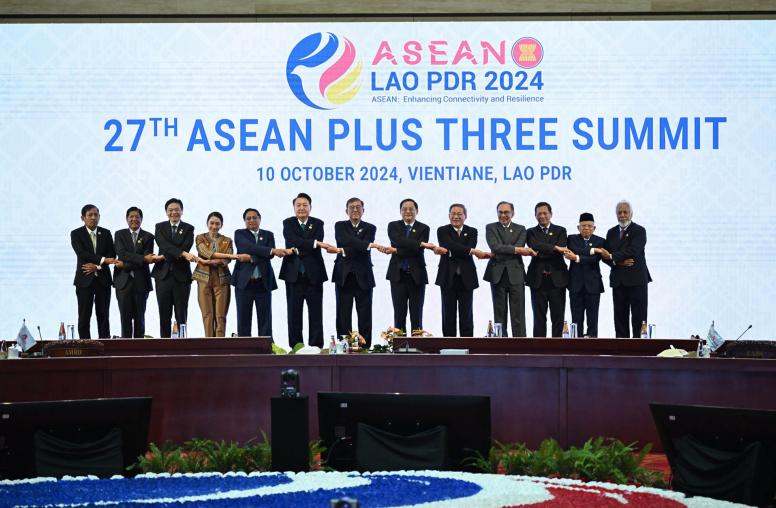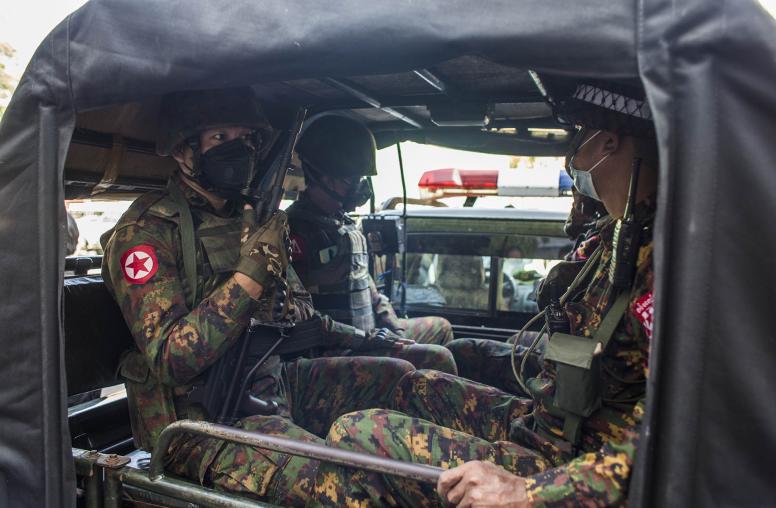Burma's Long Road to Democracy
In this Special Report, the author establishes the historical context for the recent Saffron Revolution in Burma, explains the persistence of military rule, and speculates on the country’s prospects for political transition to democracy.

Summary
- In August and September 2007, nearly twenty years after the 1988 popular uprising in Burma, public anger at the government’s economic policies once again spilled into the country’s city streets in the form of mass protests. When tens of thousands of Buddhist monks joined the protests, the military regime reacted with brute force, beating, killing, and jailing thousands of people. Although the Saffron Revolution was put down, the regime still faces serious opposition and unrest.
- Burma’s forty-five years of military rule have seen periodic popular uprisings and lingering ethnic insurgencies, which invariably provoke harsh military responses and thereby serve to perpetuate and strengthen military rule. The recent attack on the monks, however, was ill considered and left Burma’s devoutly religious population deeply resentful toward the ruling generals.
- Despite the widespread resentment against the generals, a successful transition to democracy will have to include the military. Positive change is likely to start with the regime’s current (though imperfect) plan for return to military-dominated parliamentary government, and achieving real democracy may take many years. When Than Shwe, the current top general, is replaced, prospects for working with more moderate military leaders may improve. In the end, however, only comprehensive political and economic reform will release the military’s grip on the country.
- Creating the conditions for stable, effective democracy in Burma will require decades of political and economic restructuring and reform, including comprehensive macroeconomic reform, developing a democratic constitution and political culture, re-establishing rule of law, rebuilding government structures at national and state levels, and building adequate health and educational institutions.
- The international community must give its sustained attention to Burma, continuing to press the regime for dialogue with the forces of democracy, beginning with popular democracy leader Aung San Suu Kyi, and insisting on an inclusive constitutional process. International players should also urge the regime immediately to establish a national commission of experts to begin studying and making recommendations for economic restructuring to address the underlying concerns that brought about the Saffron Revolution.
- Though China is concerned about the Burmese regime’s incompetence, it has only limited sway with the generals, who are fiercely anticommunist and nationalistic. Nonetheless, Beijing will cautiously support and contribute to an international effort to bring transition, realizing that Burma will be seen as a test of China’s responsibility as a world power.
- The United States should restrain its tendency to reach simply for more unilateral sanctions whenever it focuses on Burma. Because a transition negotiated with opposition parties is still likely to produce an elected government with heavy military influence, the United States must prepare to engage with an imperfect Burmese democracy and participate fully in reconstruction and reform efforts, which will require easing some existing sanctions.
About the Report
A career officer in the U.S. Foreign Service, Priscilla Clapp served as U.S. chargé d’affaires and chief of mission in Burma (Myanmar) from June 1999 to August 2002. After retiring from the Foreign Service, she has continued to follow events in Burma closely and wrote a paper for the United States Institute of Peace entitled Building Democracy in Burma, (PDF - 820KB) published on the Institute’s Web site in July 2007 as Working Paper 2. In this Special Report, the author draws heavily on her Working Paper to establish the historical context for the Saffron Revolution, explain the persistence of military rule in Burma, and speculate on the country’s prospects for political transition to democracy. This project was directed by Eugene Martin, and sponsored by the Institute’s Center for Conflict Analysis and Prevention.



